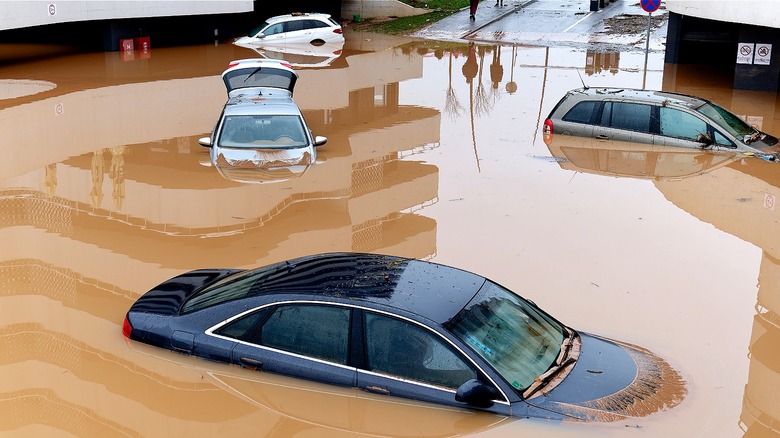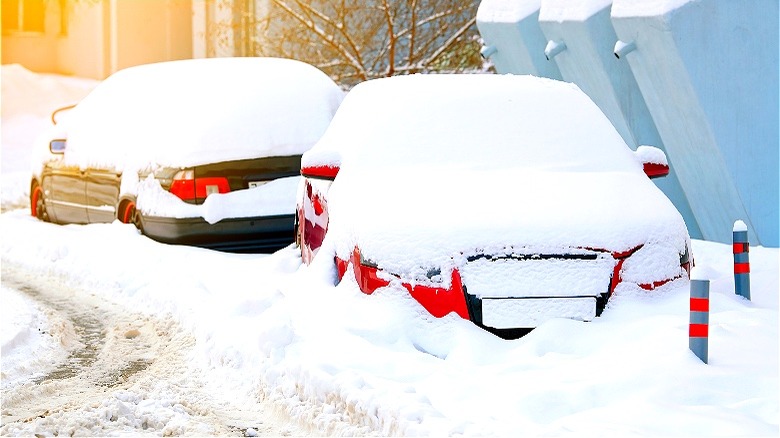The Impact Of Climate Change On Auto Insurance Rates
Rising global temperatures of one or two degrees can increase rainfall and lead to floods, while a decrease in rain in some regions can lead to droughts. Heatwaves globally are more common, as are more intense storms, leading to stronger hurricanes and tornadoes. According to Climate.gov, 28 climate-related disasters cost the U.S. $92.9 billion in 2023, which doesn't even take into account the East coast storm that hit Florida, Maine, and several points in between mid-December. A five-year bill of climate disasters from 2019 to 2023 totaled $603.1 billion. This has led to increases in both homeowners and auto insurance across the country.
According to a study by Insurify, auto insurance rates rose 24% in 2023, ticking up 15% higher in the first half of 2024 alone. The annual automobile insurance coverage averages $2,329, and climate change is a significant factor today. This said, unlike a number of insurance products that are a total waste of money, driving without auto insurance isn't an option for most (only New Hampshire and Virginia don't require drivers to carry car insurance). As for climate change, here's how it impacts your rates.
The cost of covering weather-related claims
Climate can affect cars in myriad ways. For example, tires respond to fluctuations in temperature since the air in your tire expands under heat and the opposite when cooled. Over or under inflation can affect the tread and performance of your vehicle, which also affects its driving performance and your ability to brake without skidding effectively. Hotter weather also leads to higher reliance on air conditioning, which puts that car system under strain and can negatively affect your vehicle's fuel efficiency. Overheating engines are another factor leading to the need for more oil changes. Even your car battery is at risk, since high heat can evaporate your battery fluid, wrecking your battery performance. And with a rising cost in car maintenance and repairs also comes higher insurance premiums.
Further, the types of extreme weather conditions vehicles are exposed to present more issues. For instance, severe hail accounted for 11.8% of comprehensive insurance claims in 2023, according to CCC Intelligent Solutions data (via Insurify). Wildfires, meanwhile, can outright destroy a vehicle, and since cars aren't waterproof, heavy rain and floods can impair electrical hardware, even if the car's frame survives.
So as the cost of covering weather-related claims grows, so does everybody's insurance premiums. It's similar to what we're seeing with homeowners insurance, which is one of the top things insurance companies don't want to cover anymore, particularly in states at high risk for weather events (like California, Florida, and Virginia).
States at greater risk will pay higher premiums
Depending on where you live, your auto insurance costs may skyrocket or you may have trouble sourcing insurance at all. According to Insurify's data, depending on where you live, you may pay a lot more than other areas of the nation based on the severity of climate disasters there. California, Missouri, and Minnesota, for example, could see rate increases as high as 50% due to increasing wildfires and storms.
However, Insurify's study demonstrates how even one of the cheaper states for car insurance like North Carolina can see a rapid rise in its rates, due to increased weather risk. In June 2023, North Carolina's average was $960, but by June 2024, its rate had risen 46% to $1,404. This had everything to do with Hurricane Idalia walloping the state in 2023, and the resulting damage done to vehicles in its wake. As extreme weather events like this become more of the norm in the U.S., it might be as difficult for drivers to hide from high auto insurance as it is from the financial impacts of climate change.


